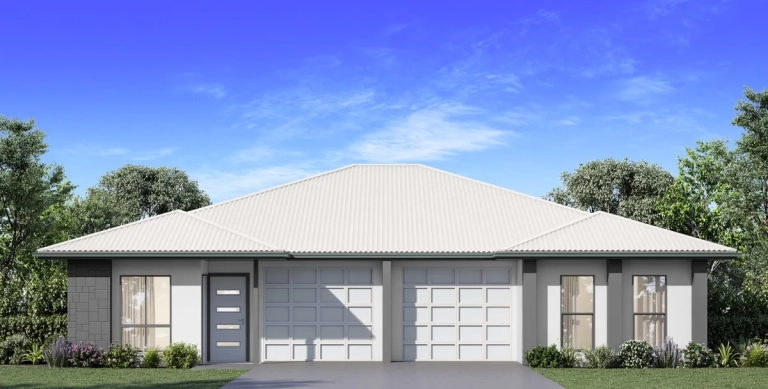NDIS Specialist Disability Accommodation
Specialist Disability Accommodation (SDA) Investment Properties

- Over 4.3 million Australians are living with some form of disability, equivalent to around 17% of the population.
- Around 530,000 people in Australia are living with a permanent and significant disability and require additional support.
- Approximately 35,000 people will require Specialist Disability Accommodation (SDA) in addition to their other supports.
- Specialist Disability Accommodation is a long-term initiative, and it is here to stay.
What Is NDIS Specialist Disability Accommodation?
The National Disability Insurance Scheme (NDIS) is a government-backed social welfare program aimed at providing necessary support for Australians living with disabilities. The goal of the scheme is to help eligible participants live more independently. NDIS Specialist Disability Accommodation (SDA) is one aspect of this scheme.
SDA housing has been specifically designed for those with high support needs. The properties feature accessibility modifications, assistive technology and, where necessary, 24/7 support staff.
Different Kinds of NDIS SDAs
There are four primary categories of NDS Specialist Disability Accommodation. These include:
- Improved Liveability: These properties have been designed or modified to improve the ability of the resident to live independently. They’ll often include accessible bathrooms, kitchens and living areas.
- Fully Accessible (FA): FA properties are specifically designed for residents with mobility impairments. They may include wider doorways, ramps, handrails and other features to assist with ease of movement.
- High Physical Support (HPS): Designed for residents with very high support needs, these houses may include specialised equipment, such as hoists and adjustable beds, as well as space for dedicated support staff.
- Robust: Robust SDA houses are designed for heavy use with minimal risk of damage. They’re typically built with more durable materials, reinforced walls and other design elements aimed at increasing safety and longevity.
What are the Benefits of Investing in SDAs?
There are a number of advantages to investing in SDAs, including:
- Stability: The NDIS is backed by legislation that requires agreement from all States and Territories before any changes can be made.
- Fast Growth: To encourage investment in SDA properties, the NDIS provides a generous rental subsidy. The scale of this building project cannot be overstated. It has been heralded as the largest social housing building program Australia has ever seen.
- Longevity: The Government has committed $700m each year for payments to SDA property investors, indexed for the next 20 years!
- Growing Need: Some participants are forced to live in inappropriate institutional housing due to a lack of available SDA housing.
- Fully Funded: NDIS implemented SDA as an additional “rental subsidy” that provides each participant with between $32,107 and $68,391 to contribute toward their rent.
Learn more about our NDIS SDA properties:
What Is a Robust Duplex SDA?
- Over 17% up yield in regional Queensland areas.
- Over 13% up yield in South-East Queensland areas.
- Only 1–2 tenants expected over the life of the investment.
- Government supported program.
We currently have 4 Robust SDA designs for a house and duplex that can cater to different needs and be customised for the participant’s preferred set-up.
Learn more about Robust Duplex SDA HERE.
What Is A High Physical Support SDA?
- Over 22% up yield in regional Queensland areas.
- Over 16% up yield in South East Queensland areas.
- Only 2-3 tenants expected over the life of the investment.
- Government supported program.
We currently have 2 HPS designs suitable for 2 and 3 participants with Onsite Overnight Assistance (OOA).
Learn more about HPS SDA HERE.
Improved Liveability Housing Accommodation Is the Next Big Thing in Property
Improved liveability housing accommodation is changing the game in Australia. It provides affordable, sustainable housing that can help to improve the resident’s quality of life.
This type of housing is designed to meet the needs of diverse populations, including families, seniors and people living with disabilities. It incorporates design principles and features that promote health, safety and well-being and is often built in locations that are close to public transportation.
Improved liveability housing accommodation is a win-win for both residents and the environment, and its popularity is only set to increase in the coming years.
Some points to consider:
- There are currently 22,000 participants with SDA support.
- This number is expected to grow to 30,000 by 2025.
- Of the current participants, 23% are either looking for their first SDA home or a more suitable home (e.g. not an institution such as an aged care facility).
- An additional 13,230 participants will require homes by 2025.
- Only 687 additional homes were registered in 2022.
- 34% of participants currently looking for an SDA home require Improved Liveability, which is the largest group of any category.
- Currently, only 16.6% of homes are classified as Improved Liveability (in WA 11.6%, QLD 10.5% and NT 5.2%).
We currently have 2 Improved Liveability SDA designs.
Learn more about Improved Liveability SDA HERE.
